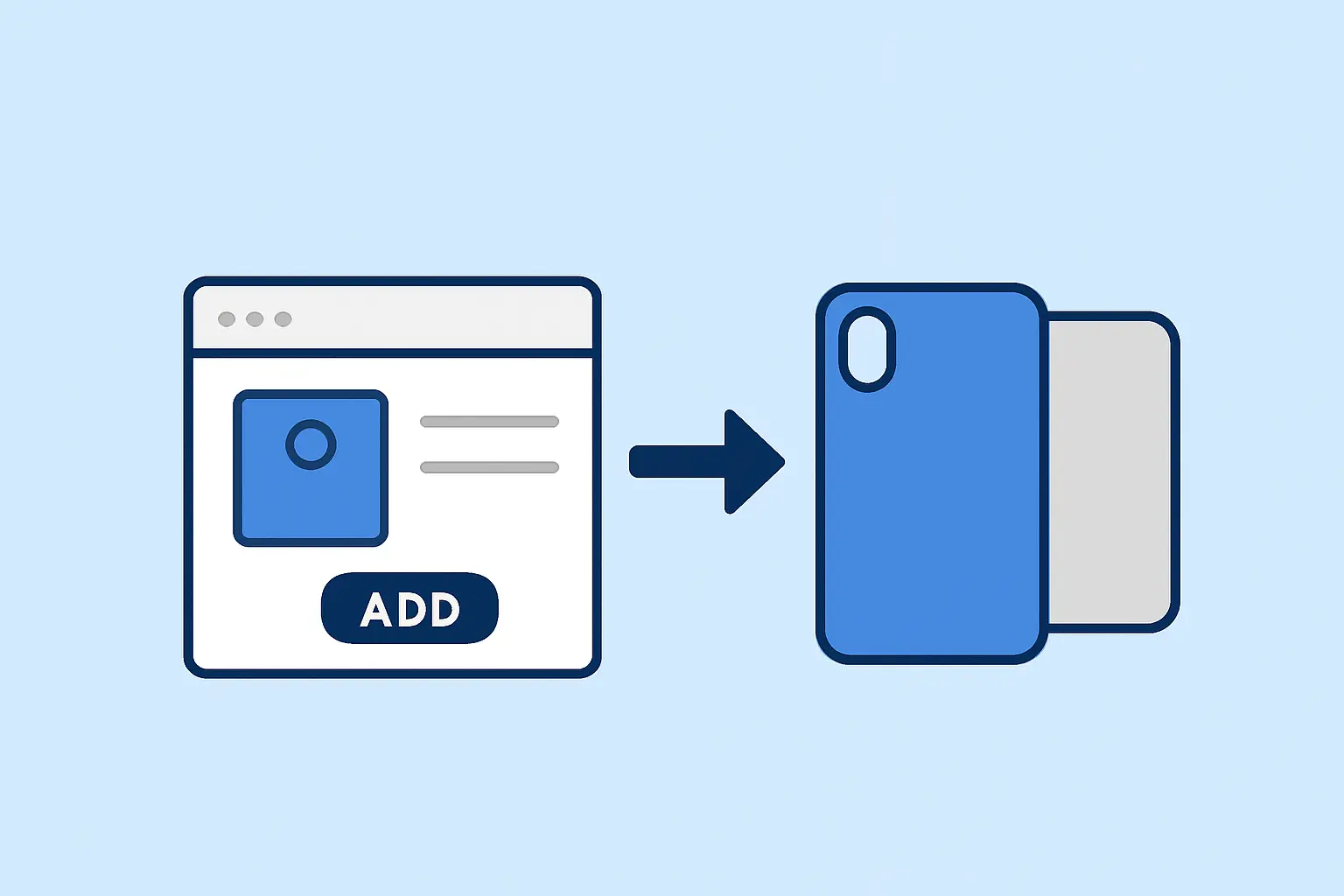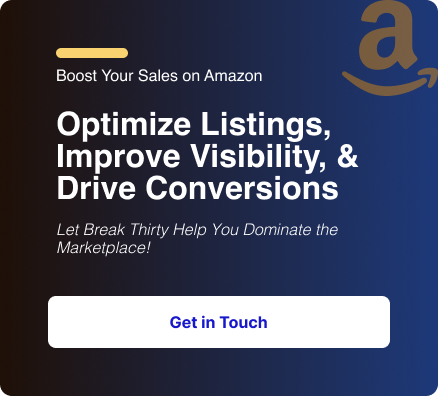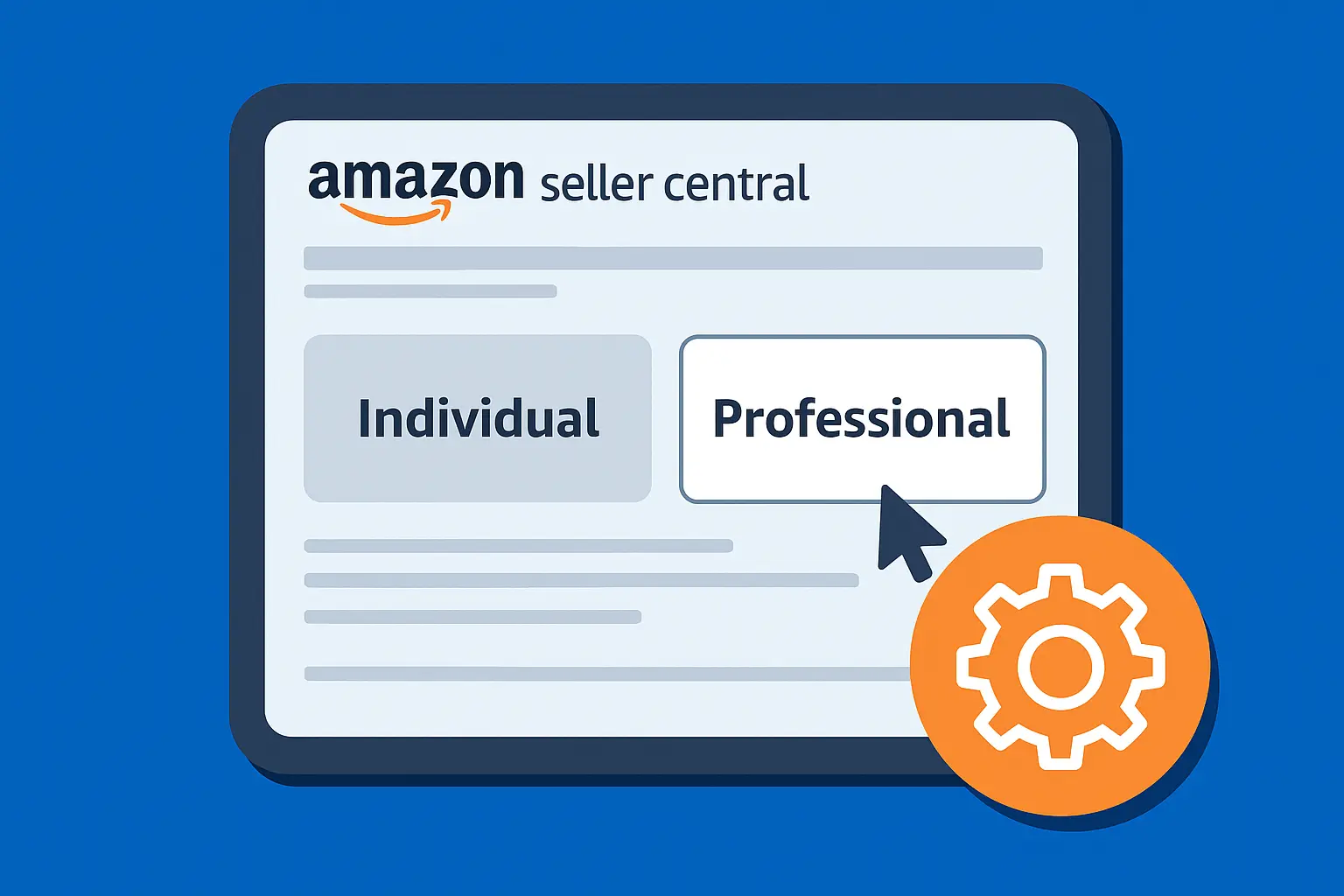You may be looking for an answer to the question, "Can I Create Virtual Bundles With Seller Central Amazon?"
The short answer is yes, you can create virtual bundles in Amazon Seller Central, but only if your account and products meet Amazon’s rules.
If you want to offer customers convenient, pre-packaged product bundles without the complexities of physical kitting.
Amazon's Virtual Bundles program could be ideal for you.
This post walks you through exactly what’s required, how to create a virtual bundle step-by-step, optimization tips, and common pitfalls.
What Are Amazon Virtual Bundles?
Amazon Virtual Bundles are a feature designed for brand-registered sellers that allows them to combine two to five existing products into a single listing, without the need to package the items together physically.
This feature enables customers to purchase multiple products with just one click, as they are presented as a single unit on a new product detail page, complete with a unique ASIN.
Why Use Amazon Virtual Bundles?
These advantages are why Amazon launched the virtual bundles tool for brand owners in Seller Central.
1. Better checkout experience
Customers can buy complementary items on one listing instead of adding multiple SKUs. This can lead to an increase in the total number of units sold and overall revenue.
2. Higher average order value (AOV)
Bundles let you offer a slight bundle discount that nudges buyers to spend more. It can increase revenue per transaction by selling multiple products at once.
3. Brand awareness
Well-curated virtual bundles enhance brand presence and encourage customers to explore your other offerings.
4. Search & conversion upside
Good bundle listings can show up in search and give a clear value proposition that lifts conversion.
Who Can Create Virtual Bundles?
You can’t create bundles from any random seller account.
Amazon virtual bundles are strictly limited by specific Seller Central eligibility requirements.
These are the few load-bearing rules that determine whether the bundle will be accepted and remain live. Keep them in mind before you build.
- Must be enrolled in the Amazon Brand Registry. Virtual bundles are a Brand Registry feature.
- Component products generally must be FBA (or SFP in some cases) and individually buyable/new and in-stock. Amazon checks component ASIN buyability.
- Bundle composition is limited to 2 to 5 ASINs per bundle.
- Each component must be its own buyable ASIN; multipacks of the same ASIN cannot be included as a bundle component.
Step-by-step: Create a virtual bundle in Seller Central
1. Log in to Seller Central
Go to Brands, then click/open “Virtual Bundles” (or “Bundle Manager” in some UIs).
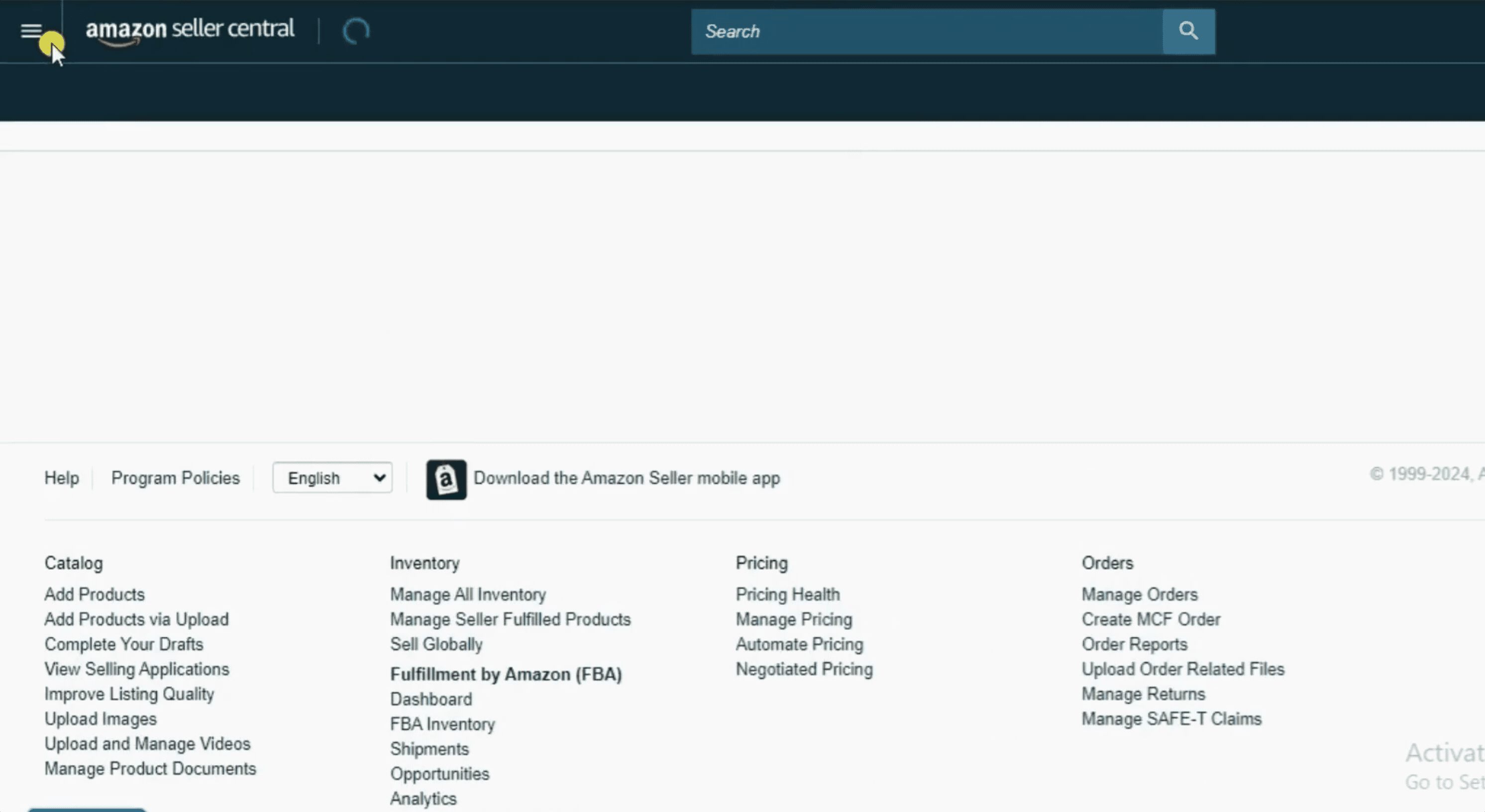
2. Choose a base ASIN
Pick the product that will act as the primary item for the bundle (Amazon often asks for a “base” or main component).
3. Add component ASINs (2–5 total)
Search by ASIN or title and click Add to bundle for each product.
You can adjust component quantities up to the allowed limits.
Make sure each ASIN is active, in “New” condition, and has FBA inventory (or SFP where permitted).
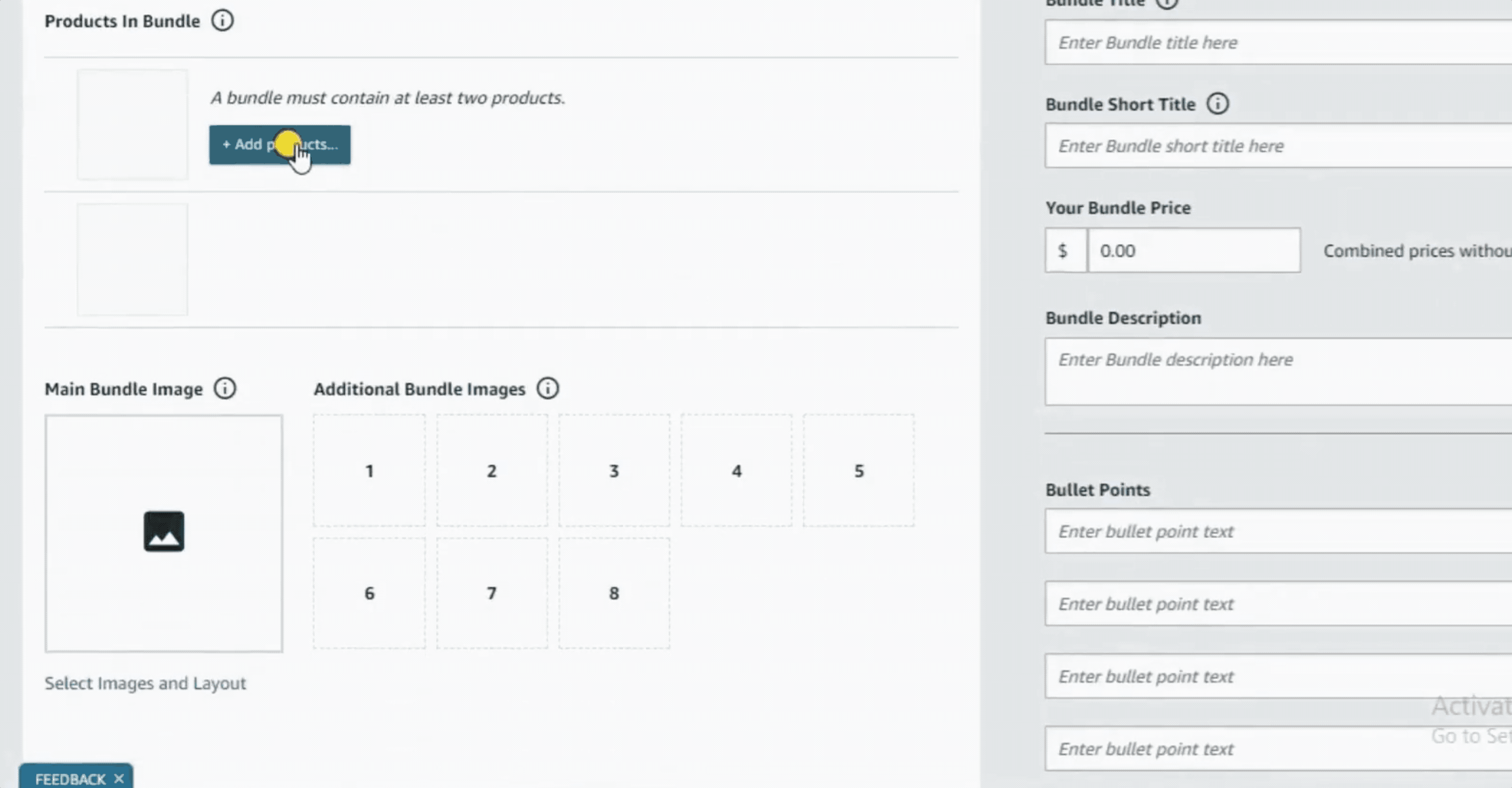
3. Upload images
Upload a clear primary image that shows all items together, plus supporting images.
Amazon allows multiple images, and many sellers recommend using up to 5 to 7 images because Amazon will show the first several on the live page, but at a minimum, include 1 strong main image.
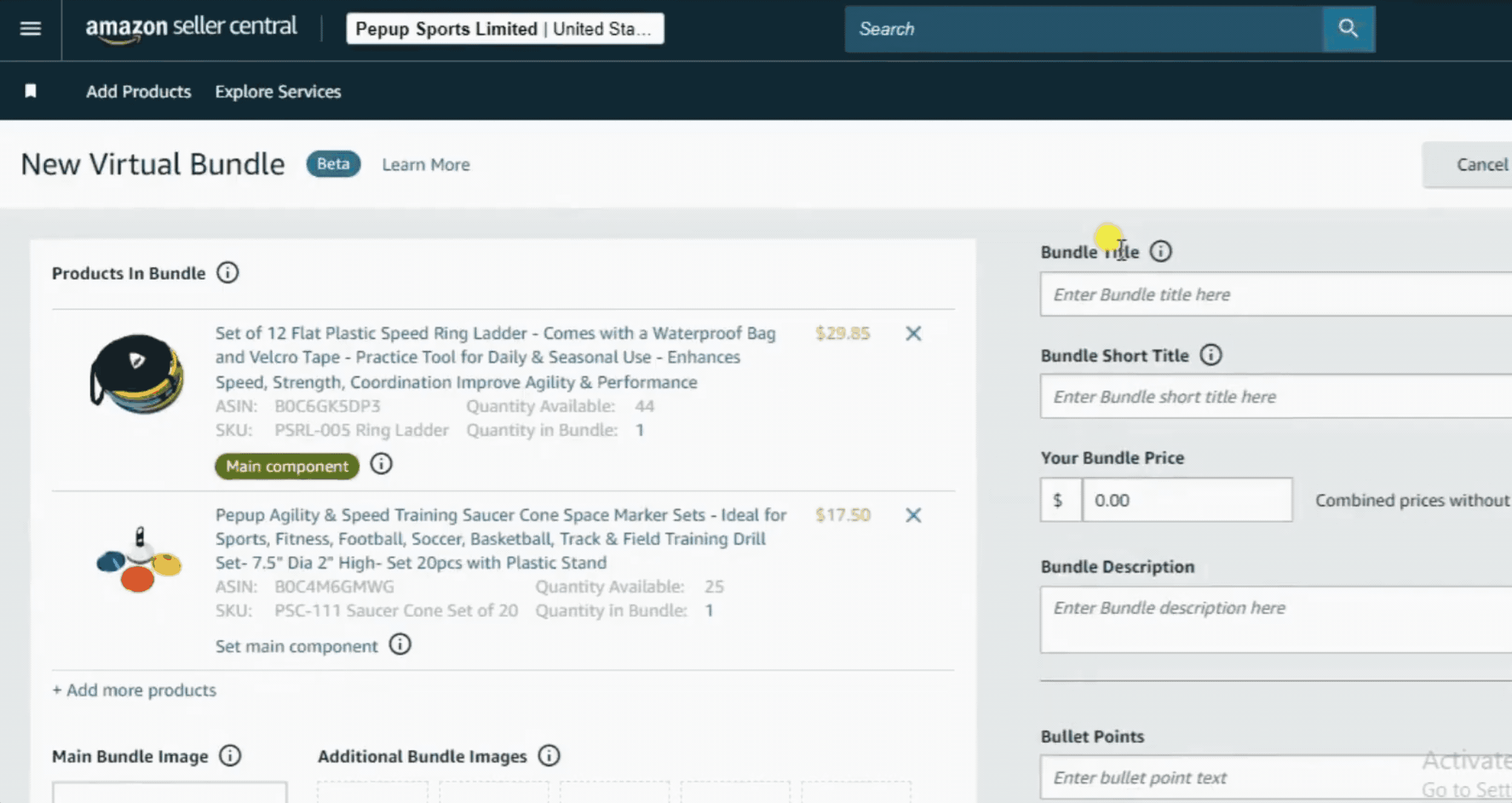
4. Write title, bullets, description, and choose price
Start the title with your brand name when possible, include key product names in the title, and set a competitive bundle price (you can offer a discount to incentivize). Keep bullets benefit-driven and descriptive.
5. Set SKU / internal identifiers
Amazon will assign an internal SKU/ASIN for the bundle. You don’t need a UPC. (You can reference that bundle listing in Manage Inventory.)

6. Review & Publish
Double-check components, images, price, and copy. Once published, some items (notably the component ASINs) can be hard or impossible to change, so be deliberate.
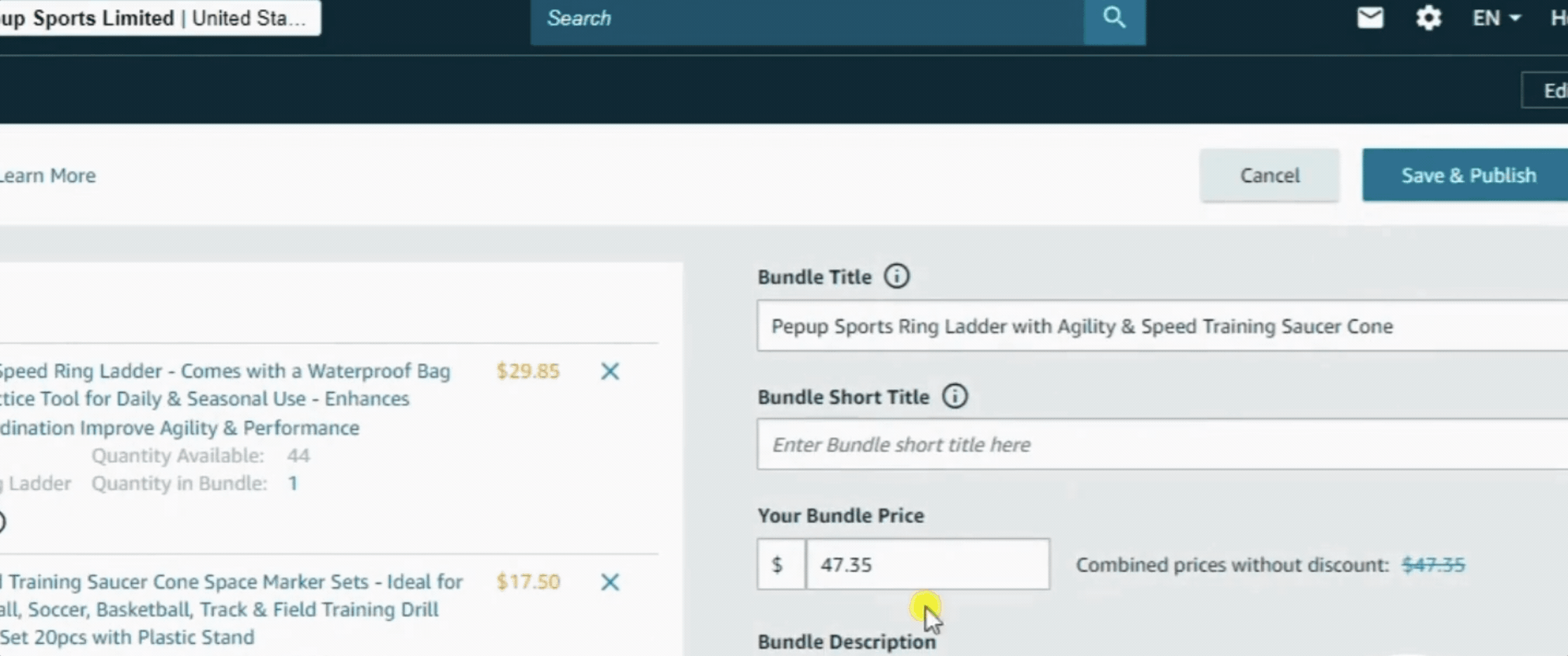
7. Monitor performance & inventory mapping
Because the bundle depends on component inventory, monitor each ASIN's FBA supply; a stockout on any required component may remove the bundle as buyable. (Tip: maintain buffer inventory on components you plan to bundle.)
Optimization Checklist For Seller Central Virtual Bundles
Title
Brand + descriptive phrase + main component names (don’t keyword-stuff).
Primary image
Show all items together on a plain background; avoid overlays that violate image policy.
Bullets
3–5 benefits + what's included (list each item and quantity).
Price
Showing a clear bundle value and a visible “you save” helps conversions.
Keywords
Use backend search terms & topic-relevant phrases: “gift set,” “bundle,” “value pack,” plus core product keywords.
Inventory
Keep component FBA inventory healthy. Bundle availability is only as strong as its weakest component.
Common pitfalls & how to avoid them
1. Assuming you can bundle any seller’s ASINs
Components generally must be buyable and tied to your brand account (Brand Registry) and FBA. Don’t attempt to include competitor ASINs.
2. Changing bundle composition post-publish
Amazon can lock bundle components; changing the base or components is often restricted and may force you to delete/recreate. Plan carefully.
3. Stock-out surprises
If any required component goes out of “buyable” status, the bundle listing will be affected. Buffer inventory.
4. Expecting instant reviews
bundles may show the component reviews, but the new bundle listing starts with zero reviews and may behave differently in search initially.
FAQs
Can I create virtual bundles with Seller Central Amazon?
Yes, if you’re enrolled in Brand Registry and your component ASINs meet Amazon’s buyable/FBA requirements and other rules (2–5 ASINs, each buyable).
Do virtual bundles need a UPC or a new barcode?
No. Amazon creates a bundle listing/ASIN/sku internally, and you don’t have to supply a UPC for virtual bundles.
Does a virtual bundle create a new ASIN / SKU?
Yes, Amazon creates a bundle listing (its own listing/ASIN and an internal SKU) for the virtual bundle, and you do not need a new UPC for it like you would with a physical pre-packaged bundle.
That listing will show the component ASINs on the page.
Can I bundle multiple units of the same ASIN (multipacks)?
Not within a standard virtual bundle, virtual bundles combine different ASINs.
Amazon has a related virtual multipack program (for multiple units of the same ASIN) with different rules.
What happens if one component sells out?
If a component becomes unbuyable, the bundle can be removed or become unpurchaseable. Monitor component inventory closely.
Can I change the products in a bundle after publishing?
Changes are limited. Amazon may not let you swap core components; sometimes you must delete and recreate the listing. Plan and test before going live.
Final thoughts
Virtual bundles are a pragmatic growth lever.
They let you package complementary products, increase AOV, and test pricing without the logistics of physical kitting.
But they’re gated behind Brand Registry and FBA rules, and changing components after publish can be painful.
So test one or two bundles, monitor inventory carefully, and optimize images/titles like you would any listing.
For most brand owners, a tight, well-priced bundle that solves a clear customer need is worth the effort.
Mastery of the Virtual Bundle strategy lies not in its creation, but in excelling in advanced cross-selling, and mastering Virtual Bundles is essential.
This involves refining inventory tracking and reporting.
Reach out to our expert Amazon SC Management team for a thorough audit of your Amazon Seller Central catalog to enhance your bundle strategy and boost profits.
.svg)




